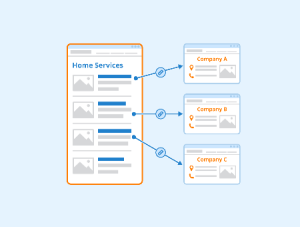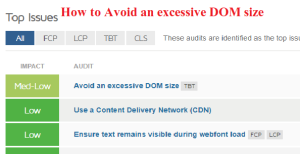
How to Check Backlink Source: A Comprehensive Guide with 5 Useful Tricks
How to Check Backlink Source: A Comprehensive Guide with 5 Useful Tricks In this comprehensive guide, we will explore various methods and tools to help you understand how to check backlink source effectively. In the ever-evolving world of search engine optimization (SEO), backlinks remain a critical factor in determining a website’s authority and ranking on search engine results pages (SERPs). A backlink is essentially a hyperlink from one website to another, and it serves as a vote of confidence from one site to another. However, not all backlinks are created equal. To truly understand the quality and impact of backlinks on your website’s SEO, it’s essential to know how to check their source. Backlink Checker by Nick Youngson CC BY-SA 3.0 Alpha Stock Images so let’s know How to Check Backlink Source: A Comprehensive Guide with 5 Useful Tricks 1. Manual Inspection The first and most straightforward way to check the source of a backlink is through manual inspection. This method requires a bit of time and effort, but it can provide valuable insights into the quality and relevance of the linking site. Here’s how you can do it: Step 1: Identify the Backlink Start by identifying the backlink you want to investigate. This can be a link that you’ve acquired recently or one that you’ve noticed on your website’s backlink profile. Step 2: Visit the Linking Page Click on the backlink, and it will take you to the linking page. Pay attention to the content surrounding the link. Is it relevant to your website’s topic? Does it appear to be a natural and authoritative source? Step 3: Evaluate the Website Explore the linking website in detail. Look for information about the website’s authority, credibility, and trustworthiness. You can check for factors like domain age, content quality, and the presence of a physical address and contact information. Step 4: Check for Nofollow Tags Inspect the HTML source code of the linking page. Check if the backlink has a “nofollow” attribute. Nofollow links do not pass SEO authority, so they may have less impact on your site’s rankings. 2. Using Google Search Operators Google search operators are powerful tools that can help you find backlinks to your website and their sources. To use this method, follow these steps: Step 1: Identify the Backlink Again, start by identifying the backlink you want to investigate. Step 2: Use Google Search In the Google search bar, type the following query: link:yourwebsite.com Replace “yourwebsite.com” with your actual website URL. This will display a list of websites that link to your site. Step 3: Explore the Source Click on the links in the search results to explore the source of the backlink. Assess the quality and relevance of the linking website. 3. Backlink Analysis Tools While manual inspection and Google search operators are useful, they can be time-consuming and may not provide a comprehensive view of your backlink profile. This is where backlink analysis tools come into play. These tools automate the process and provide in-depth insights into your backlinks and their sources. Some popular backlink analysis tools include Ahrefs, SEMrush, Moz, and Majestic. Here’s how you can use these tools to check backlink sources: Step 1: Access the Tool Sign up for a backlink analysis tool of your choice. Most of these tools offer a free trial period or limited free access. Step 2: Enter Your Website Enter your website’s URL into the tool’s search bar. The tool will generate a detailed report on your backlink profile. Step 3: Explore Backlinks Navigate to the section that lists your website’s backlinks. Here, you can see a comprehensive list of websites linking to your site. Step 4: Analyze Backlink Sources Click on individual backlinks to access more information about their sources. Backlink analysis tools provide data on domain authority, anchor text, and other relevant metrics. 4. Google Search Console Google Search Console is a free tool provided by Google that allows website owners to monitor their site’s performance in Google search results. It also offers insights into backlinks to your site. Here’s how to use it: Step 1: Set Up Google Search Console If you haven’t already, set up Google Search Console for your website. You’ll need to verify ownership by adding a verification code to your site. Step 2: Access the Tool Once verified, log in to your Google Search Console account. Step 3: Navigate to Links In the left-hand menu, click on “Links.” Then, click on “External Links” to see a list of websites linking to your site. Step 4: Analyze Backlink Sources Click on individual backlinks to view more details about their sources. Google Search Console provides information about linking domains and the pages on your site they are linking to. 5. SEO Browser Extensions There are several browser extensions designed for SEO professionals that can help you quickly check backlink sources while browsing the web. One popular extension is MozBar. Here’s how to use it: Step 1: Install the Extension Search for and install the SEO browser extension of your choice. In this case, we’ll use MozBar as an example. Step 2: Activate the Extension Once installed, activate the extension by clicking on its icon in your browser’s toolbar. Step 3: Visit the Backlink Navigate to the page with the backlink you want to check. The browser extension will display information about the linking page’s domain authority, page authority, and other relevant metrics. Conclusion Understanding how to check backlink sources is crucial for improving your website’s SEO performance. By assessing the quality, relevance, and authority of the websites linking to your site, you can make informed decisions about your link-building strategy and prioritize high-quality backlinks. Whether you choose to manually inspect backlinks, use Google search operators, employ backlink analysis tools, utilize Google Search Console, or leverage SEO browser extensions, each method offers unique insights into your backlink profile. By consistently monitoring and evaluating your backlink sources, you can enhance your website’s authority and climb higher in the SERPs, ultimately driving more organic traffic and achieving
How to Check Backlink Source: A Comprehensive Guide with 5 Useful Tricks Read More »









